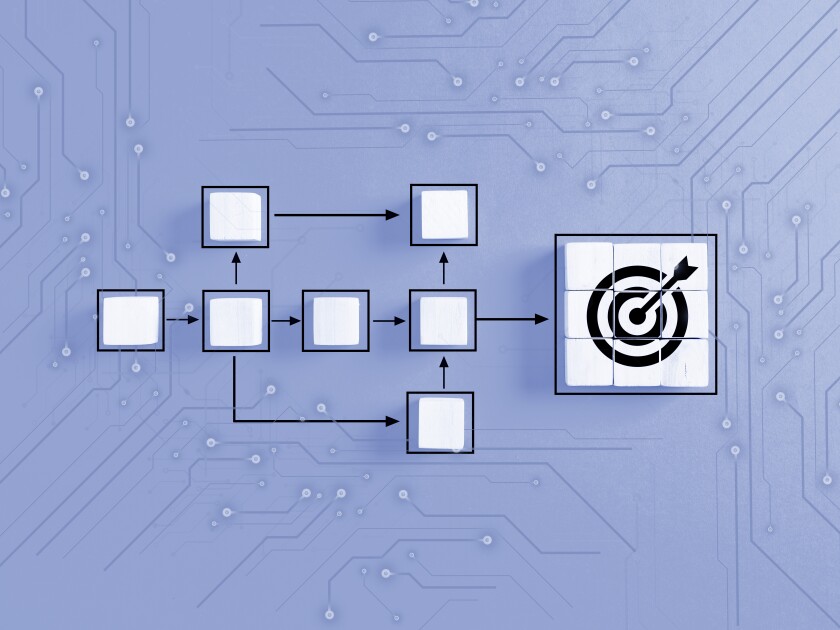
17 Jan Can AI Write a Good IEP? What Special Education Experts Say
Special education professionals often gripe about the onslaught of paperwork they’re required to fill out, on top of the challenges of providing robust services to students with disabilities.
What if artificial intelligence could wipe out at least some of that burden?
That’s the question some educators are pondering as generative AI tools like ChatGPT and Bard grow more widely available and technologically sophisticated.
But investing too quickly in the promise of AI could be perilous for special education as well. Each student who qualifies for special education services has unique circumstances that can’t easily be standardized, said Lindsay Jones, chief executive officer of CAST, a nonprofit formerly known as the Center for Applied Special Technology.
“Algorithms aren’t flexible enough to recognize the diversity of needs. We have to move forward cautiously,” Jones said. “But with that said, there is some really interesting and promising stuff that’s happening.”
Here are a few examples, and the opportunities and limitations of each.
Minimizing paperwork
Opportunity: Educators serving students with disabilities spend countless hours documenting the services they provide to ensure they are complying with the Individuals with Disabilities Education Act (IDEA). The more students they are responsible for overseeing, the more documentation they have to keep.
The less time special education providers have to spend filling out forms, the more time they can spend on the core of their work—providing students with the guidance and resources they need to succeed in the classroom, regardless of their disability status.
Limitation: Just because AI can possibly do paperwork doesn’t mean it will do it correctly.
Forms that deal with special education services often include sensitive information that would be risky or potentially even illegal to share on a publicly accessible AI platform that absorbs all of the data it receives.
Some educators have already experimented with using fake names to prevent sensitive information from being exposed, said Tessie Bailey, director of the federally funded PROGRESS Center, which conducts research and advocates for students with disabilities. That approach can be helpful, Bailey said, but it doesn’t entirely eliminate the underlying concern about privacy.
Generating IEP goals
Opportunity: Some educators have already begun asking generative AI tools to help them with writing Individualized Education Programs, or IEPs. These complex documents undergird the learning experience for America’s roughly 7 million students with disabilities. Educators could save time and perhaps even learn something from a tool that can access a repository of existing IEP language.
Limitation: So far, AI tools have proven to effectively generate documents that look like IEPs. But that basic standard isn’t enough—by law, the documents also need to substantively match the student’s needs and address them in detailed, tangible ways. Only a human can ensure the IEP does that, said Bailey, who’s also a principal consultant for the American Institutes for Research.
“If teachers don’t have the capacity to create a high-quality educational IEP, it doesn’t matter if you give them AI,” Bailey said.
Increasing the variety of instructional tools
Opportunity: Educators are starting to get requests from parents for AI tools to be among the services provided to their children in their IEP. The potential for these tools to help students is vast, from voice assistants that narrate for visually impaired students to translators that convert text to and from English.
Limitation: A teacher recently came to Bailey’s organization asking for guidance on whether to grant a parent’s request for the child to get help from artificial intelligence tools.
“We don’t really have answers,” Bailey said.
Bailey’s own child has dysgraphia, a condition that causes a person’s writing to be distorted or incorrect. AI tools have been helping him write papers.
But it’s still necessary to teach her son how to use the tool, and how to develop the ideas it ends up helping him to translate to written words, she said.
Districts also need more guidance on which emerging tools have been rigorously tested for efficacy, Jones said.
“If you have a framework and a way for approaching this consistently, that includes asking questions and being curious, I think we can move into an environment that is much more flexible,” Jones said. “It is going to take all of us.”


No Comments